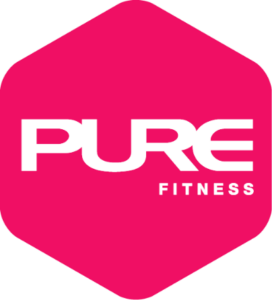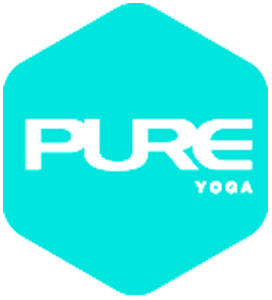Reading Time: 9~12 mins
15 March 2024
For those new to strength training, the prospect can be daunting. However, with the right approach and a bit of guidance, adding resistance exercises to your daily routine doesn’t need to be complicated or overwhelming.
Start light and progress gradually:
Begin with lighter weights or resistance bands to allow your body to adapt to the new challenge. Over time, you can gradually increase the load to continue reaping the benefits of muscle and bone development.
Focus on proper form:
Maintaining correct form during strength exercises is crucial, especially for older adults who may be more susceptible to injuries. Seek guidance from a qualified fitness instructor or personal trainer to ensure you’re performing each exercise safely and effectively.
Warm up and cool down:
Always include a warm-up session of light aerobic activity and a cool-down period with stretching to prepare your body and help prevent injury.
Listen to your body:
Pay close attention to how your body feels during and after each workout. While it’s normal to feel some muscle soreness, sharp or persistent pain should never be ignored.



1. Stand with your feet hip-width apart and a stick centred over your feet.
2. Bend your knees and hinge at hips to grip the stickwith a normal hand grip.
3. Keep your back straight, core engaged, and shoulders slightly in front of the stick.
4. Drive through heels, extend hips, and stand up, lifting the stick while keeping it close to your body.
5. Squeeze glutes and engage core at the top of the movement.
Hinge at the hips to lower the stick back down in a controlled manner.
6. Repeat for desired number of repetitions, focusing on proper form and technique.
Note: Keep your back straight throughout the movement to avoid rounding or excessive arching. Engage your core and maintain a neutral spine position to protect your lower back. Push through your heels to generate power and maintain balance.

Muscle, bone, and joint health
The most obvious and immediate benefit of strength training is the increased muscle mass and subsequent strength that it brings.
For older adults, it is a defense against sarcopenia – the age-related loss of muscle mass and strength.
Contrastingly, strength training prompts the body to fortify existing muscle tissues and encourages the growth of new ones, ensuring a strong foundation to carry out daily activities without strain or injury.
Alongside bone density loss, osteoporosis emerges as a significant concern. Weight-bearing exercises, particularly strength training with additional resistance, have shown effectiveness in countering this decline by encouraging bone formation.
This, combined with the comprehensive regime of physical benefits such as improved balance and a reduction in fat, strengthens the body against common age-related health issues.
Cognitive function and emotional health
Strength training benefits extend beyond mere physicality. Studies have indicated a positive correlation between resistance training and cognitive function in older adults, suggesting that lifting weights may stave off cognitive decline.
Furthermore, participating in consistent strength training boosts mood and provides stress relief through the release of endorphins, the body’s natural ‘feel-good’ chemicals, after exercising.
This comprehensive enhancement of both mind and body empowers seniors with the resilience required to confidently face life’s obstacles.
Strength training empowers the body, revitalises the mind, and extends active years into seniority, leading to a longer and higher-quality life.
Seeking expert guidance from fitness professionals is invaluable for both beginners and seasoned veterans to enhance workout routines.
Personal trainers can create tailored programmes based on personal needs, goals, health status, and ageing considerations.
Don’t hesitate to sign up for a complimentary personal training session!

A fresh approach to a wellness studio that helps you unscramble your head and Re:set your system mentally, physically and emotionally – powering you up to feel your best again.

Whether you want to tone your body or pump up your cardio, harness the power and grit with PURE Fitness.

From private yoga to specialised classes, enjoy the ultimate yoga experience with PURE Yoga and lead happier, healthier, and more balanced lives.
From yoga to fitness, PURE Online provides scheduled and on-demand workout videos to practise anytime and anywhere.
noodfood offers only the good stuff — delicious and nutritious food and drinks including cold-pressed juices, raw foods and organic snacks to keep you happy and healthy.

A fresh approach to a wellness studio that helps you unscramble your head and Re:set your system mentally, physically and emotionally – powering you up to feel your best again.

Whether you want to tone your body or pump up your cardio, harness the power and grit with PURE Fitness.

From private yoga to specialised classes, enjoy the ultimate yoga experience with PURE Yoga and lead happier, healthier, and more balanced lives.
From yoga to fitness, PURE Online provides scheduled and on-demand workout videos to practise anytime and anywhere.
noodfood offers only the good stuff — delicious and nutritious food and drinks including cold-pressed juices, raw foods and organic snacks to keep you happy and healthy.
A fresh approach to a wellness studio that helps you unscramble your head and Re:set your system mentally, physically and emotionally – powering you up to feel your best again.
Whether you want to tone your body or pump up your cardio, harness the power and grit with PURE Fitness.
From private yoga to specialised classes, enjoy the ultimate yoga experience with PURE Yoga and lead happier, healthier, and more balanced lives.
From yoga to fitness, PURE Online provides scheduled and on-demand workout videos to practise anytime and anywhere.
noodfood offers only the good stuff — delicious and nutritious food and drinks including cold-pressed juices, raw foods and organic snacks to keep you happy and healthy.
A fresh approach to a wellness studio that helps you unscramble your head and Re:set your system mentally, physically and emotionally – powering you up to feel your best again.
Whether you want to tone your body or pump up your cardio, harness the power and grit with PURE Fitness.
From private yoga to specialised classes, enjoy the ultimate yoga experience with PURE Yoga and lead happier, healthier, and more balanced lives.
From yoga to fitness, PURE Online provides scheduled and on-demand workout videos to practise anytime and anywhere.
noodfood offers only the good stuff — delicious and nutritious food and drinks including cold-pressed juices, raw foods and organic snacks to keep you happy and healthy.
Let us know how we can help you.
Form submitted. Our representative will contact you shortly.
Form submitted. We will Our representative will contact you shortly.
Let us know how we can help you.
Form submitted. Our representative will contact you shortly.